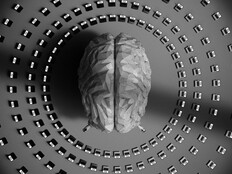Teachers Are Turning to AI Solutions for Assistance
While teachers may always be the best line of defense for students falling behind, busy schedules don’t always permit the special attention and feedback that students need. That’s where artificial intelligence–powered teaching assistants might come in handy.
“These intelligent tools can adapt pacing based on the student’s ability … and provide targeted, corrective feedback in case the student makes mistakes, so that the student can learn from them,” states an eSchool News report released earlier this year. “These tools also gather actionable insights and information about a student’s progress and report the data back to the teacher.”
Understandably, there is still some hesitation at the idea of using this technology, as education professionals fear the day robots will replace teachers. However, as Thomas Arnett, a writer at the Christensen Institute, explains in his report, Teaching in the Machine Age, these advances are not meant to replace teachers but help them bring students to new heights.
“Innovations that commoditize some elements of teacher expertise also supply the tools to raise the effectiveness of both non-experts and expert teachers to new heights and to adapt to the new priorities of a 21st-century workforce and education system,” writes Arnett.
Schools have already begun to adopt machine learning initiatives to help teachers and students fill learning gaps, and the results have been received well so far.
SIGN UP: Get more news from the EdTech newsletter in your inbox every two weeks!
AI Solutions Drive Higher STEM Test Scores
At Slackwood Elementary School in New Jersey, AI assistants helped bolster first-grade students, a majority of whom were struggling to achieve high test scores in science, technology, engineering and math courses.
At the beginning of the year, 60 percent of students scored a preliminary benchmark math score of 9 out of 48, indicating to district math specialist George Regan that it might be helpful to introduce a machine learning–based teacher assistant into the classroom as part of a small-group rotation.
After one year of using Happy Numbers, an AI-assisted teaching assistant, nearly all the students improved their scores to a 35.
“[Happy Numbers] is the most comprehensive and effective technology teaching tool I have ever used for my Kindergarten and First Grade classes,” Regan says as part of a case study conducted by Happy Numbers. “I am amazed at the independent success my students are achieving with each task.”
One of the key differences between the two exams was the elevated level of conceptual understanding among the students. According to Regan, the first-graders had transitioned from memorizing answers to understanding the language of problem-solving by using the program.
Artificial Intelligence Gives Teachers More Time and Specific Data
Intelligent assistant solutions can also help teachers analyze student data and alter lesson plans to best benefit their classes.
Programs like Century Tech use AI to study student engagement and responses in order to help teachers and education administrators understand how their students learn.
Thinkster, a tool designed for math tutoring, utilizes artificial intelligence to track a student’s thought process through a problem, which is then recorded, analyzed and used to recommend how the teacher can best address concerns.
New essay grading software like Gradescope, developed at the University of California-Berkeley, can shorten grading time by 50 percent, freeing up time for teachers to have one-on-one discussions with students.
For Tacoma (Wash.) Public Schools, AI has helped increase graduation rates. Using Microsoft’s Azure Machine Learning software, schools are able to develop a predictive model, based on collected student data, to accurately predict a student’s current probability of graduating. This approach allows teachers to develop proactive solutions to help at-risk students before it’s too late. By using this method, graduation rates jumped from 55 to 82.6 percent by 2016.
How Can Teachers Get Started with AI?
Integrating AI into regular classroom curricula is no easy task. With the technology still in its emergent phase, teachers who are interested in these solutions may also find it difficult to gather definitive best practices.
According to a 2018 Consortium for School Networking (CoSN) report, it’s important to consider the culture and technical readiness of your school before bringing in robotic teaching assistants.
“Small and mid-sized districts tend to be the most facile and can move forward quicker,” says Alex Kaplan, global sales leader of IBM Watson Education. “A basic technology infrastructure including a student information system, assessment data, digital instructional resources and bandwidth to schools, is essential.”
To get the most out of AI integration, Kaplan emphasizes the need for specific data sets, including grade books and assessments aligned to specific standards.
It is also important to pick the best tool for both the students and teachers. While some schools are starting to use Amazon Alexa as an AI learning tool, federal and state data privacy laws can create implementation barriers and detract from the educational aspect of that technology.
Partnering with vendors can be a good way to gain insight into properly introducing AI. To help schools initiate these conversations, the CoSN report includes a list of questions schools should be asking, even when working with a trusted vendor:
- What does AI mean to you?
- How is your product superior to current non-AI options?
- How will AI help this product improve once installed?
- How should I expect to allocate teachers and time to these improvements?
- How can I monitor what will happen with the data used by this product?
- What data and computing power is needed to use this product?
- What resources are available to improve the data the AI uses to help the program work better?
Armed with the answers to these questions, schools can start to feel more comfortable establishing and working with AI teaching assistants.









